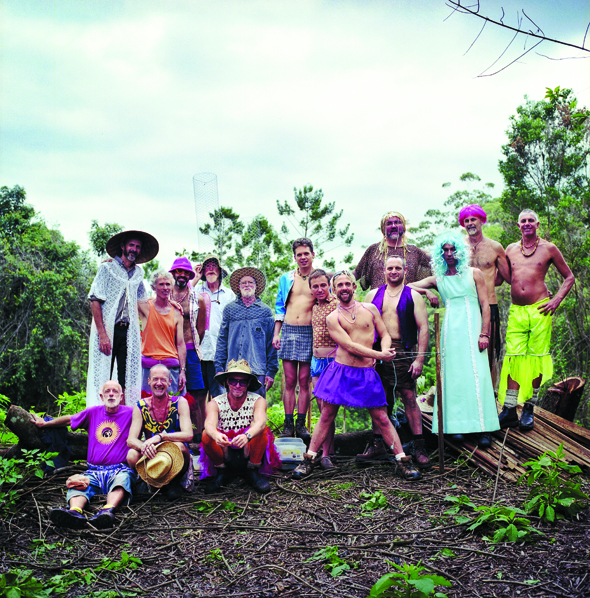
Faerieland When photographer Claire Martin rolled her van onto this sanctuary for a group of gay men off the coast of Australia, she knew that getting an invitation to stay wouldn’t be easy. (Claire Martin)
When photographer Claire Martin first heard about Faerieland, a sanctuary close to the eastern Australian coast for gay men who crave a quieter and more open way of life, she was instantly enamored. Stretched over 134 acres of re-growth rainforest, it’s a place for those who seek meditation, communication, physical and emotional nakedness. The inhabitants of Faerieland strive for simpler lives. They grow much of their own food, they drum, dance, wear costumes (often dresses). “Radical faeries,” as they call themselves, want to reconnect with what’s natural, both on the land and within themselves.
“They just seemed like such good people, but also unusual, and doing something so fringe and idealistic and oddball, but just so beautiful,” says Martin. “I was just infatuated with it all.”
Martin knew she wanted to spend some time there, understand Faerieland’s inhabitants and their way of life, help tell their story. But it wasn’t easy to gain an invitation.
Not many journalists enter Faerieland, and neither do many women. The commune espouses openness and acceptance, yet its identity as a haven makes its inhabitants protective of their privacy. Many seek out the sanctuary because they’ve come from oppressive pasts. “Faerieland can be like a collection of broken toys,” says Martin. “People come in all shapes and forms.”
And so when Martin, searching for a story on marginalized communities in developed countries for an arts grant, asked if she could hang around for a couple of months and take pictures, the faeries wanted to feel her out. (“Feel,” Martin would come to realize, was the operative word. Faeries believe in hugging.) So the inhabitants, who include seven permanent residents, and others passing through, invited her to lunch.
Martin first rolled her van, then serving as her winter home, onto the faeries’ property in July 2012. She and the faeries held hands, they breathed, they ate organic vegetables grown on the land and honey from Faerieland bees. And the faeries invited her to stay. She hung around for most of the winter, but the trip was a bust. The pictures she took didn’t say what they needed to; they just didn’t work. And there was no explanation for why. “I knew there was magic there,” says Martin, “but I just couldn’t tap into it at all.”
She didn’t give up. In March 2013, she returned with funding from SBS, a major Australian broadcaster, this time for a brief, five-day trip. Martin jokes that the moon must have been at the right angle, because suddenly all the magic that had eluded her on her previous visit was right in front of her, abundant. The faeries were generous with the camera, letting Martin into quiet, sometimes gleeful moments.
She captured those moments on a Hasselblad film camera that only holds 12 shots on each roll. It requires a certain slowness and is held at the waist; Martin has to look down to see the viewfinder. “Holding a camera up to your face all of the time is kind of rude,” she says. Keeping the camera at her waist and being forced to take shots with intention instead of speed helps people forget they’re being photographed. “It’s a slow, easygoing, friendly piece of equipment.”
The faeries were friendly in return, and their ease helped Martin capture what she feels is the essence of their world. “They’re just sort of these pure, good humans; they live their dream,” she says. “It doesn’t work all the time, but they try. They’re people who are trying.”
Christie Chisholm is a CJR senior editor. Follow her on Twitter at @c_chisholm.
